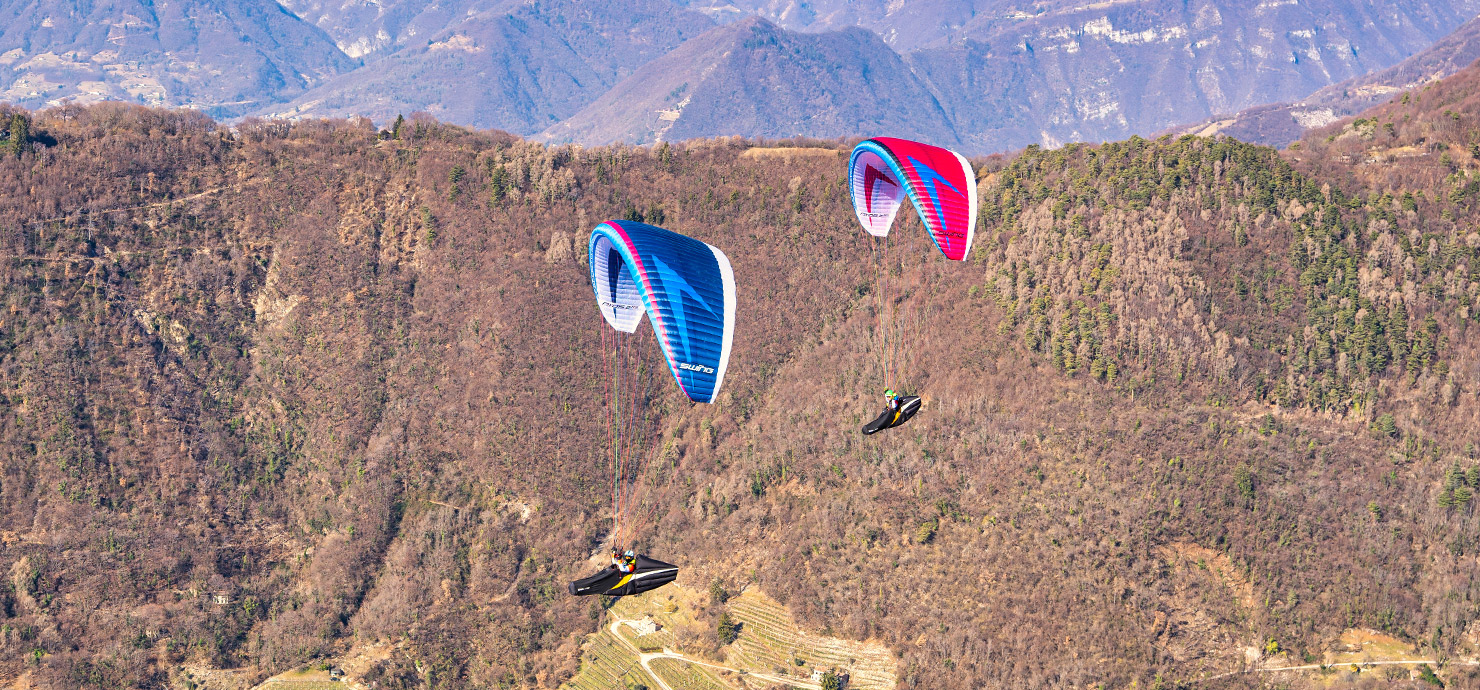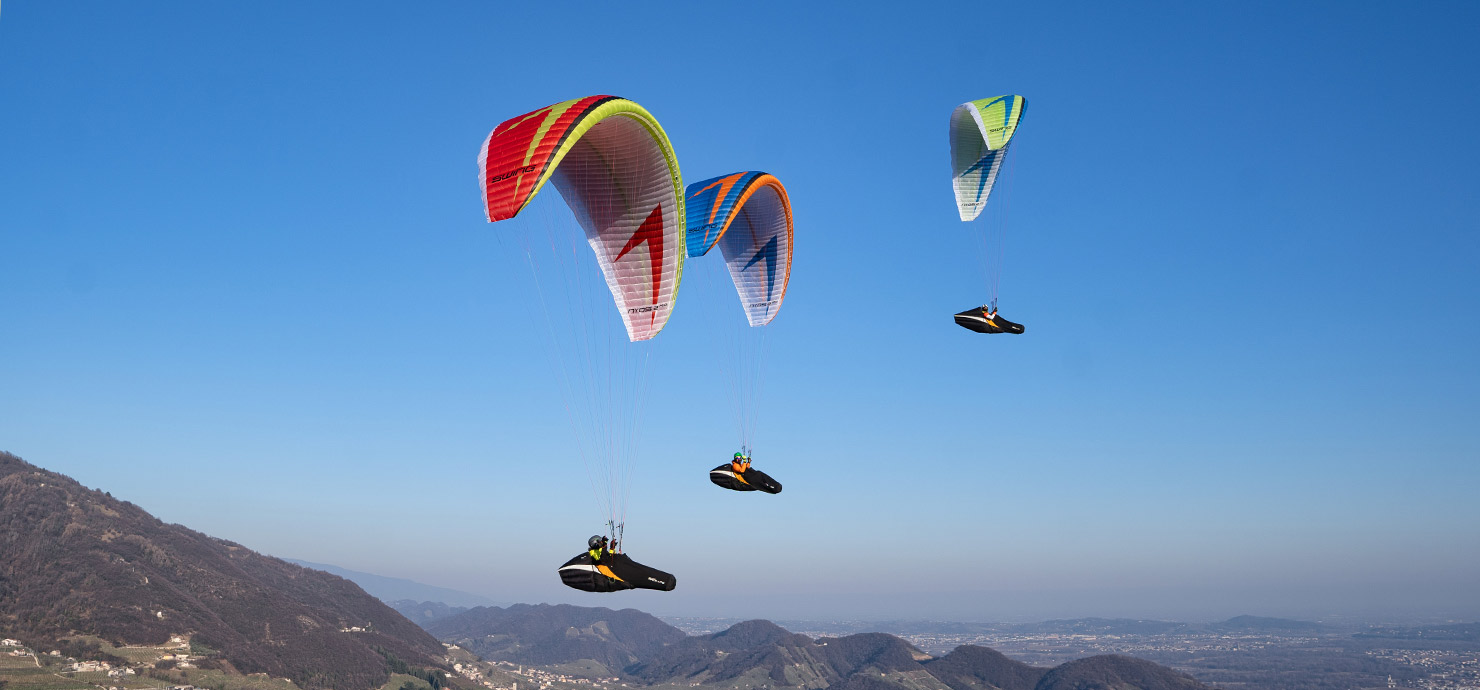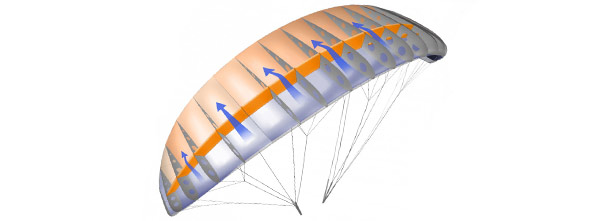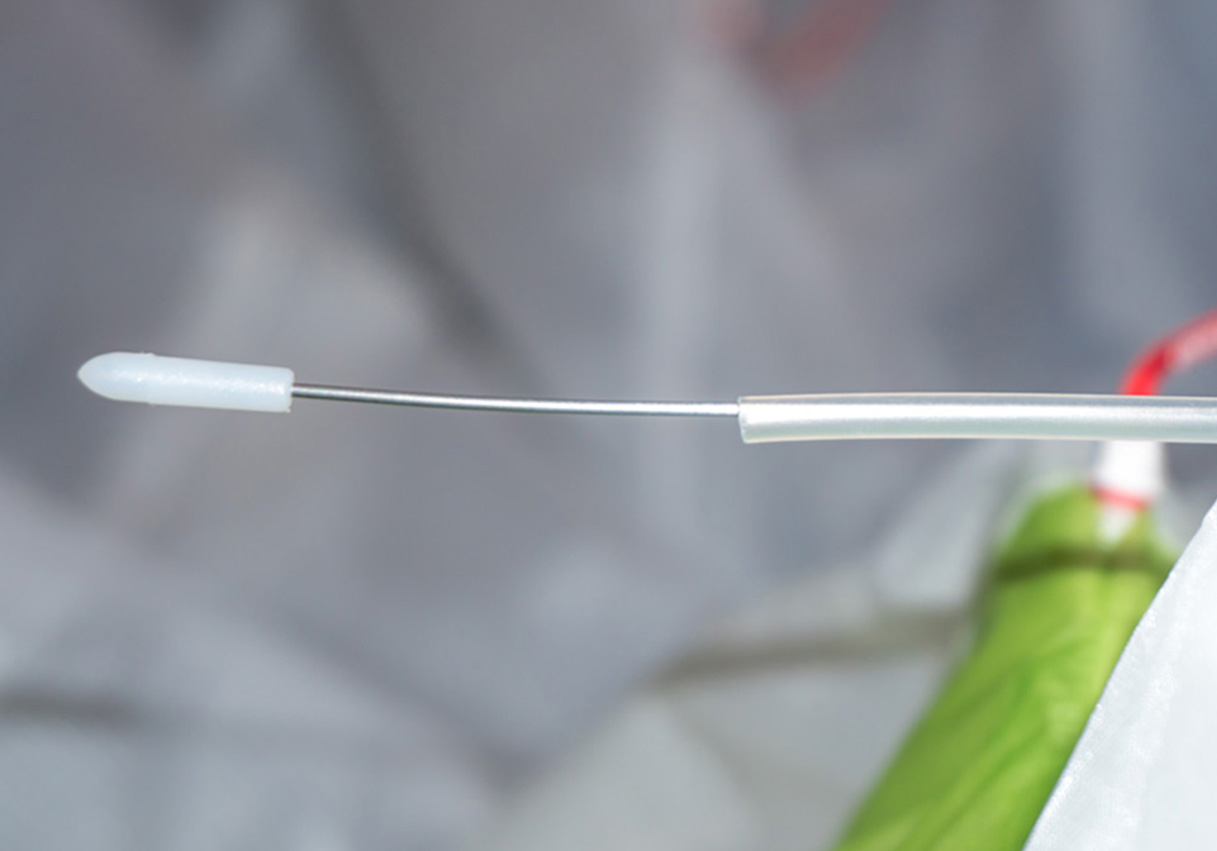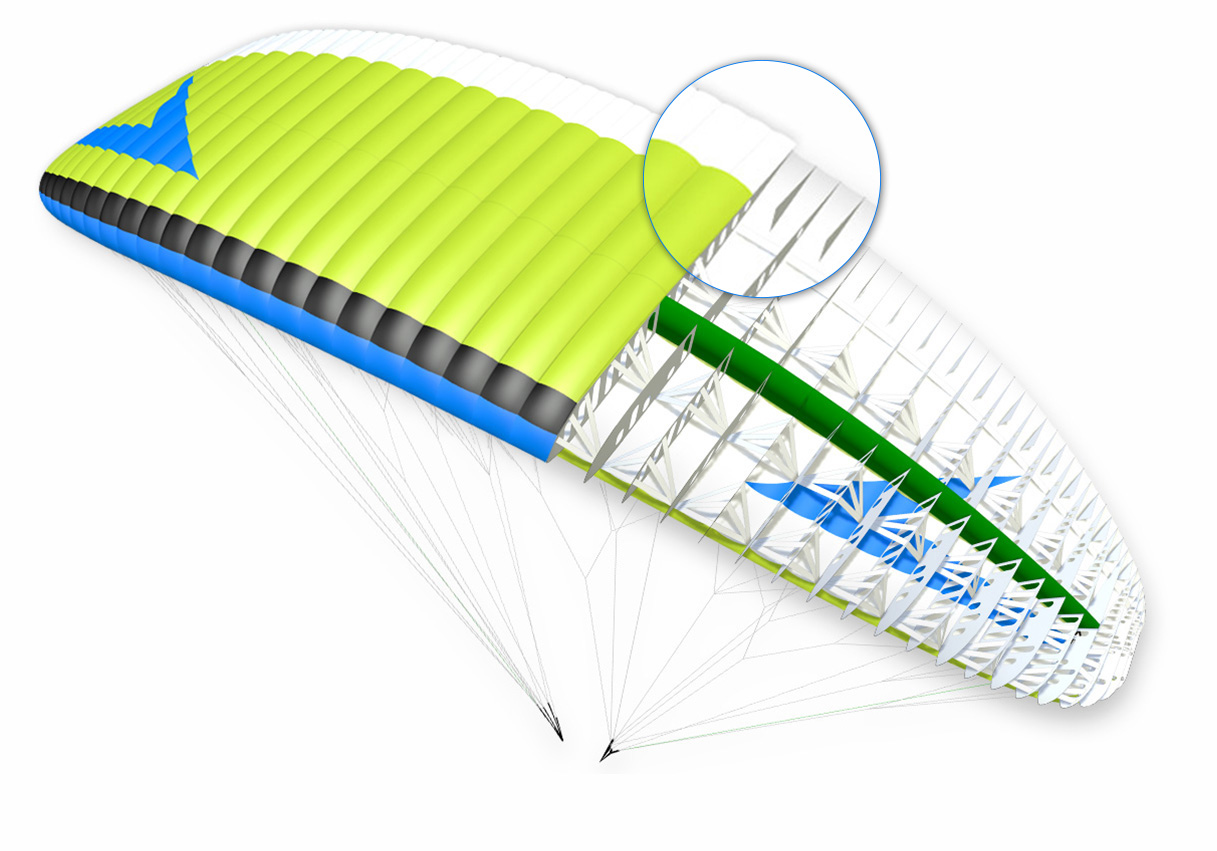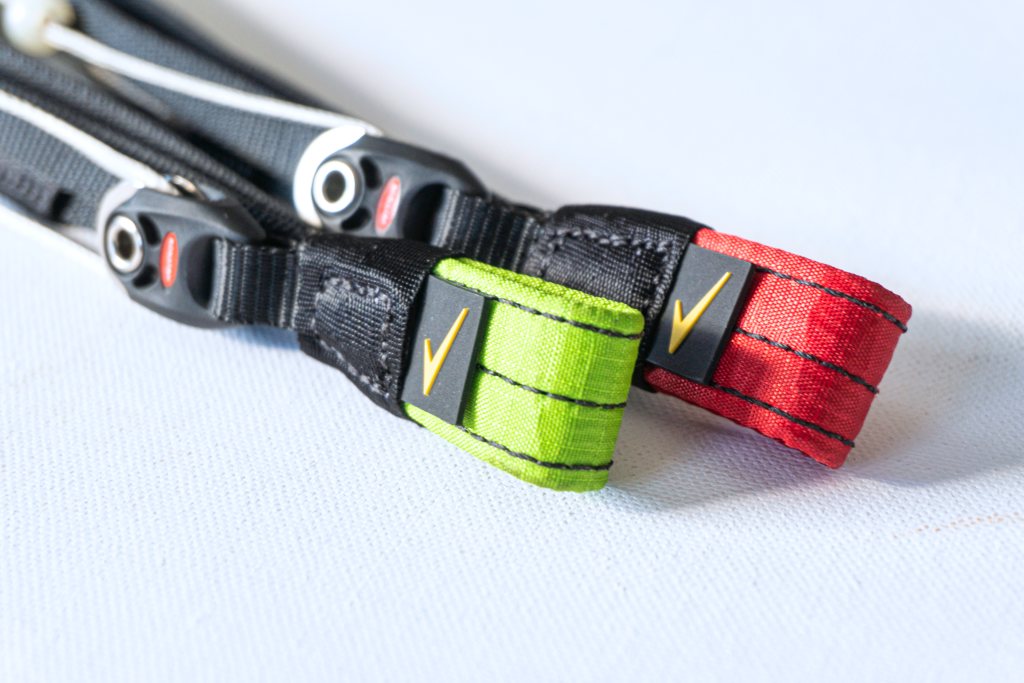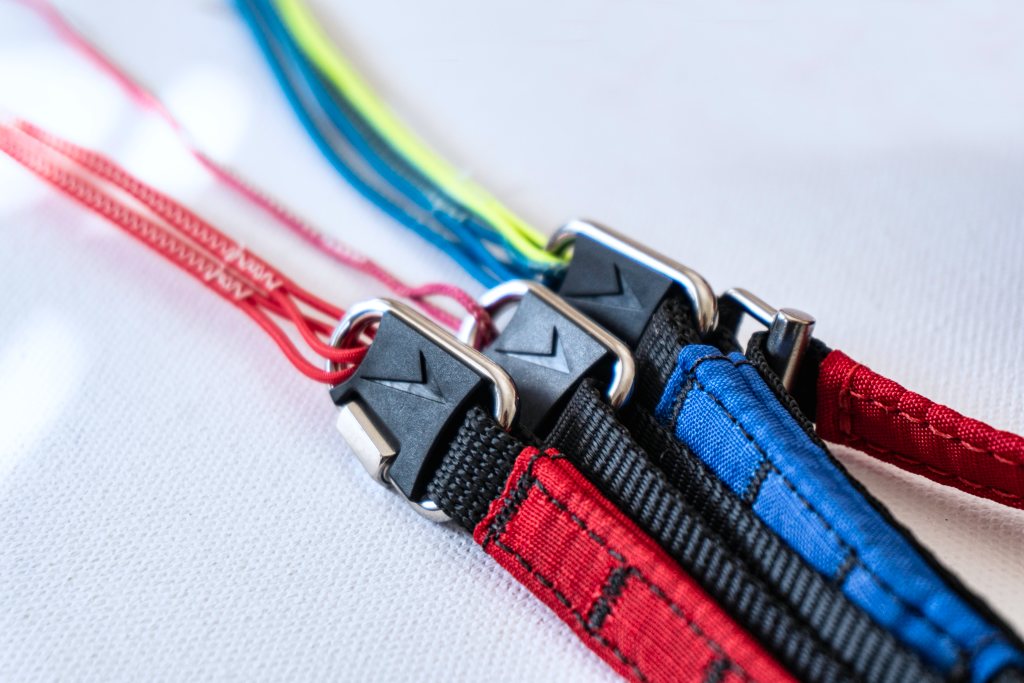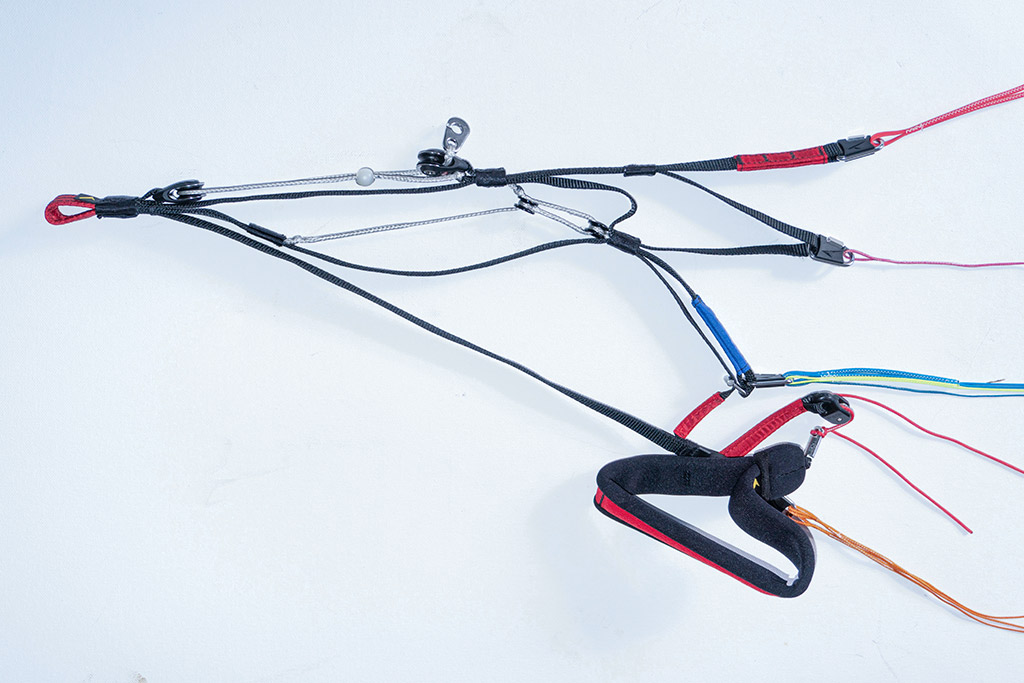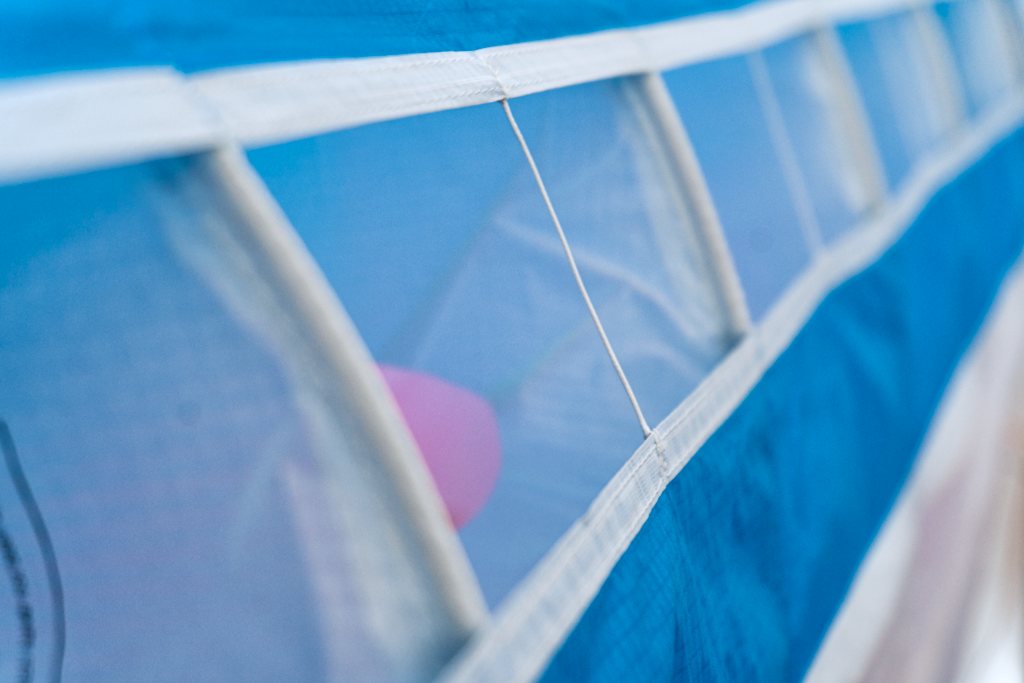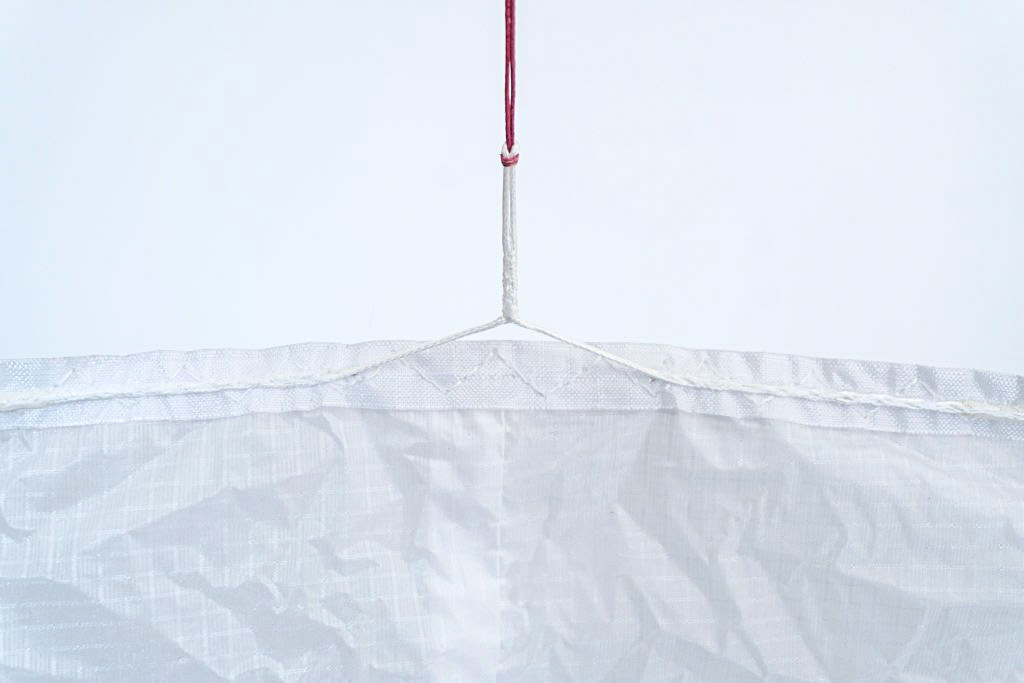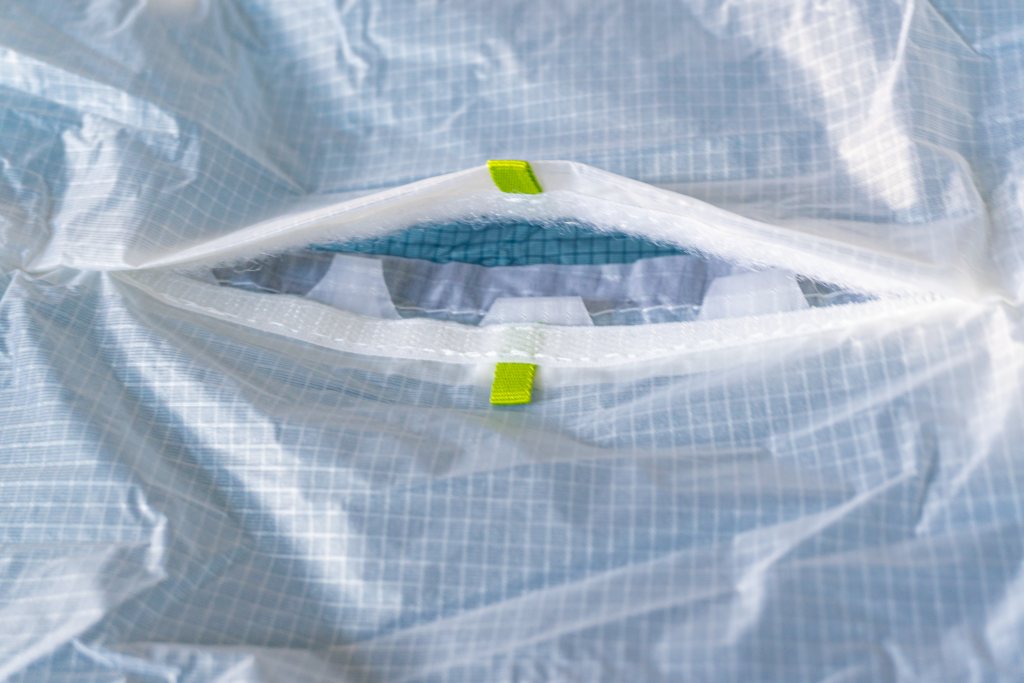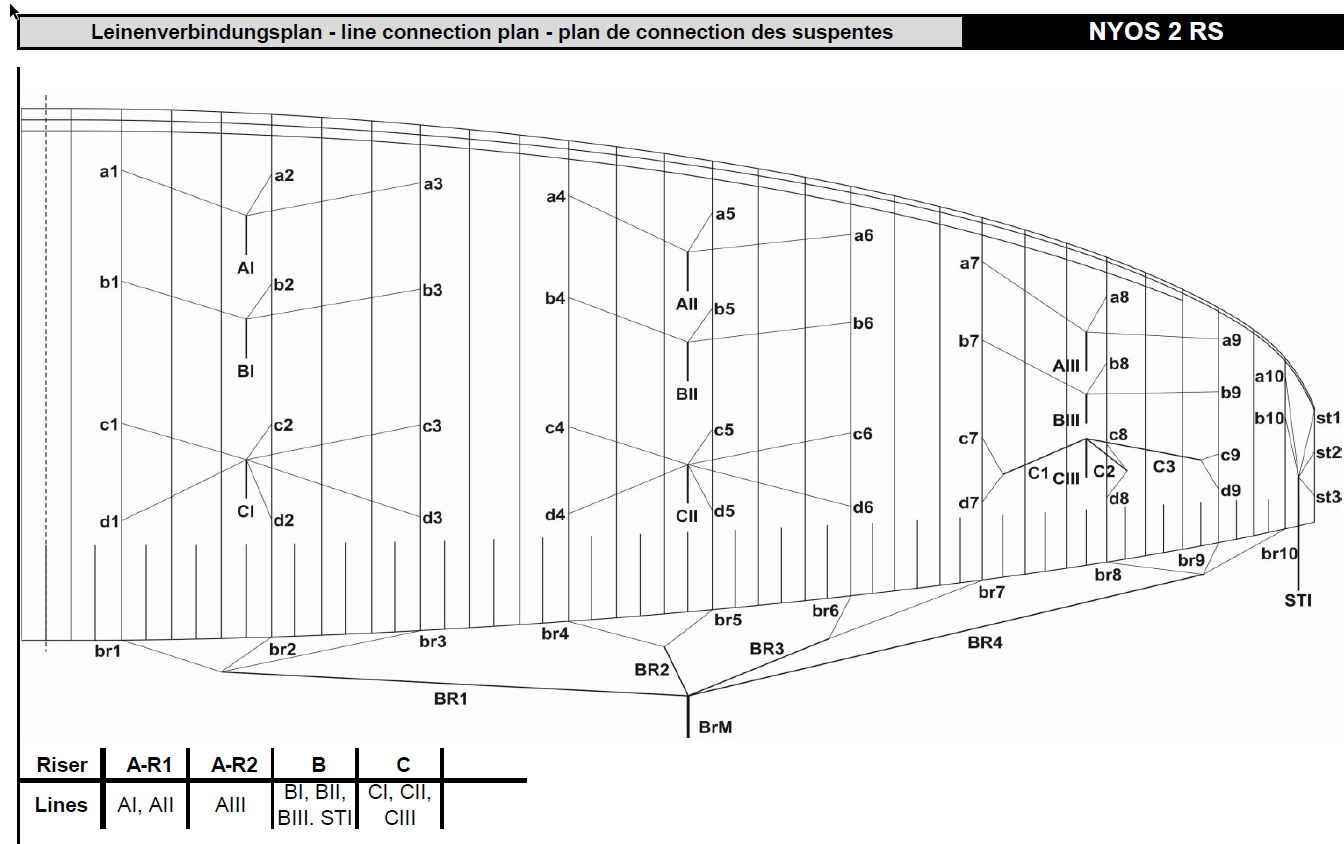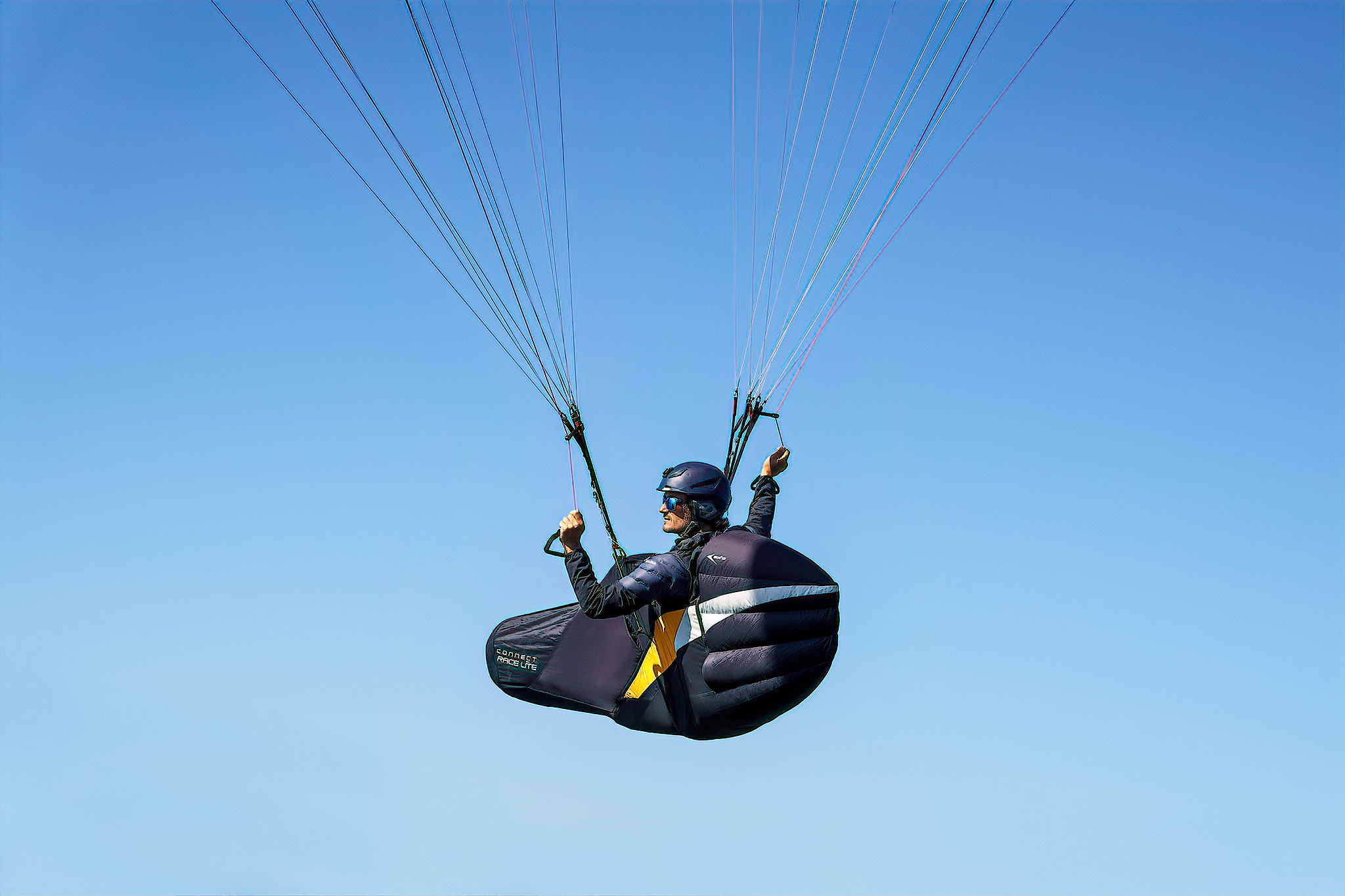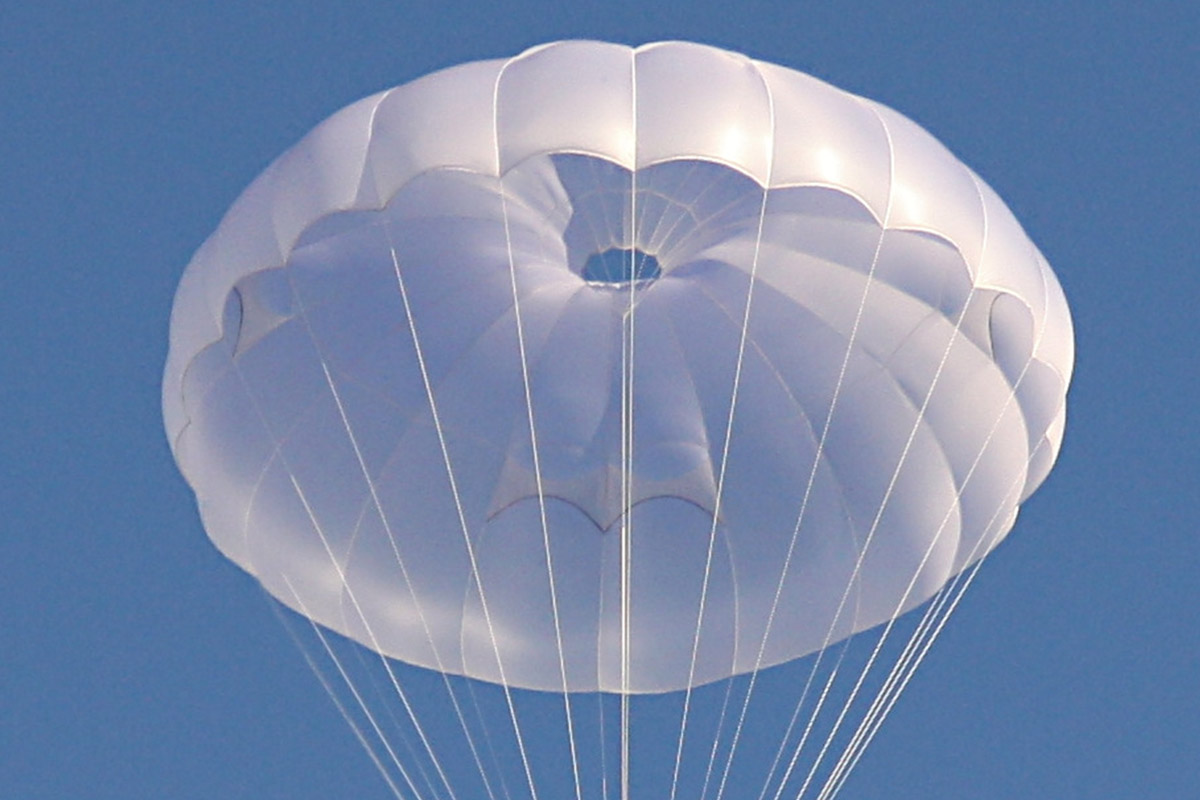NYOS 2 RS
…superior XC flying!
The Nyos RS was once described as the “Rolls Royce of the High-B class” in a highly acclaimed test report due to its cultivated flight behavior.
The aim in developing the Nyos 2 RS was to combine this flying comfort with more performance and sportiness to create something extraordinary: To resolve the apparent contradictions between performance and comfort, as well as agility and control.
The motto for the development of the Nyos 2 RS was evolution rather than revolution. We placed particular emphasis on maintaining the proven characteristics of its predecessor, but were able to significantly increase the maximum speed and glide performance by optimizing the canopy and line resistance. The more agile and precise handling of the NYOS 2 RS – compared to its predecessor – noticeably improves the thermal characteristics and is reflected in excellent climbing performance. The narrower gradation of the weight ranges makes it easier for you to select the ideal wing size.
Conclusion: The NYOS 2 RS offers performance-hungry cross-country pilots plenty of performance with maximum flying comfort and is predictable and easy to control even in demanding conditions.
Who is the Nyos 2 RS for?
Even though the Nyos 2 RS has inherited the high flying comfort of its predecessor and is easy to control, we recommend this wing for experienced intermediate pilots and ambitious cross-country hunters.
Features
detail-pirctures
COLORS
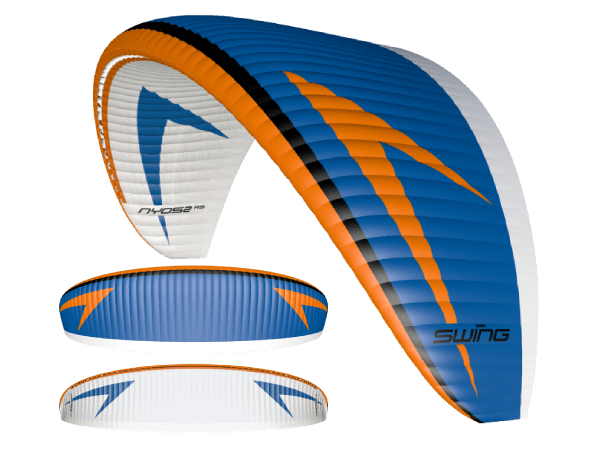
Coral

Spicy
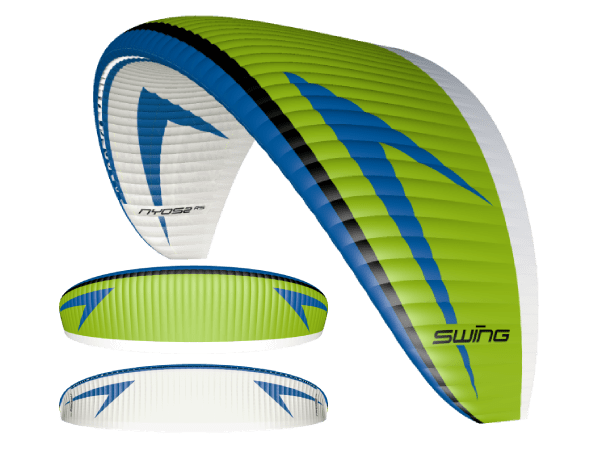
Dream
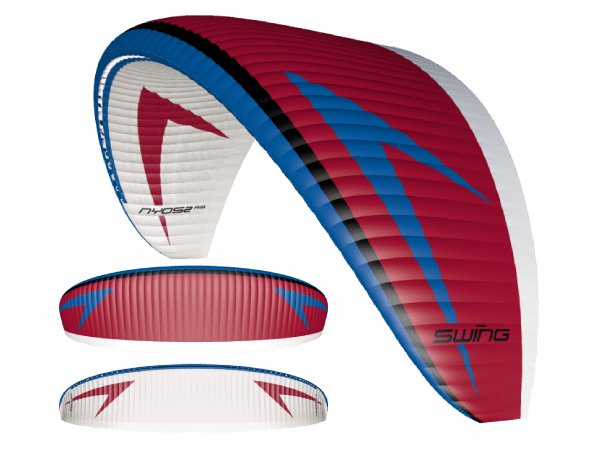
Berry
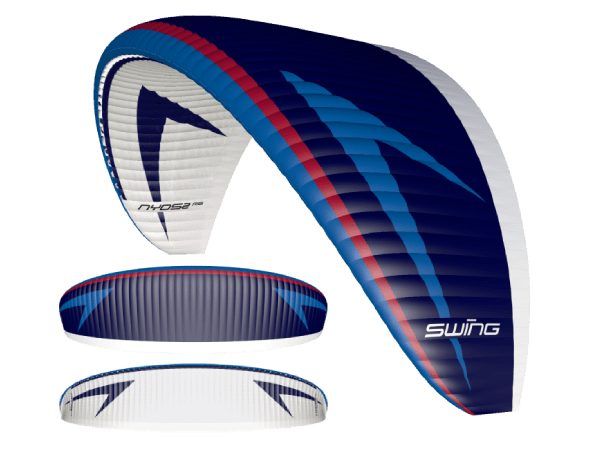
Nightshade

Aurora
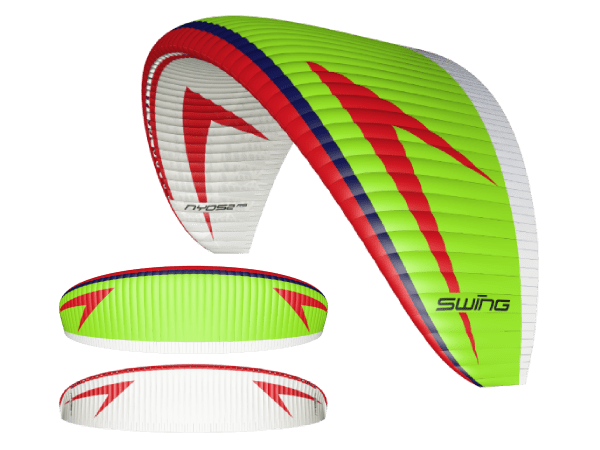
Chili
| NYOS 2 RS | XS | S | SM | ML | L |
|---|---|---|---|---|---|
| LTF Certification | B (PDF) | B (PDF) | B (PDF) | B (PDF) | B (PDF) |
| EN sample test | B | B | B | B | B |
| Permissible weight range (kg) Min/Max incl. Equipment |
55-78 | 65-90 | 75-100 | 85-110 | 100-125 |
| Recommended weight range (kg) Min/Max incl. Equipment |
60-75 | 75-85 | 85-95 | 95-105 | 105-120 |
| cells | 61 | 61 | 61 | 61 | 61 |
| wing area (m²) | 21,0 | 22,5 | 25,0 | 27,0 | 30,0 |
| projected wing area (m²) | 17,9 | 19,1 | 21,3 | 23,0 | 25,5 |
| wing span (m) | 11,0 | 11,4 | 12,0 | 12,5 | 13,2 |
| projected wing span (m) | 8,7 | 9,1 | 9,5 | 9,9 | 10,5 |
| aspect ratio | 5,8 | 5,8 | 5,8 | 5,8 | 5,8 |
| projected aspect ratio | 4,3 | 4,3 | 4,3 | 4,3 | 4,3 |
| glider weight (kg) | 4,1 | 4,3 | 4,7 | 5,0 | 5,4 |
| NYOS 2 RS | EN | EN |
|---|---|---|
| Operating instructions | PDF FILE | PDF FILE |
| Service and inspection booklet | PDF FILE | PDF FILE |
| Inspection instructions | PDF FILE | PDF FILE |
- SWING NYOS 2 RS
- Protection Bag II
- compression strap
- manual




